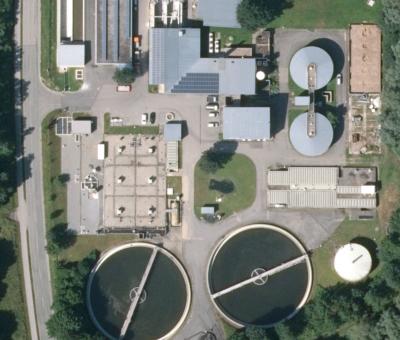The Imst treatment plant in Tyrol proves that VTA Biosolit® is an all-rounder.
The Gurgltal Imst Inntal wastewater association is an affiliation of ten municipalities in Tyrol. In an interview with Laubfrosch, managing director and plant manager Harald Lugsteiner reveals how he found a sustainable solution to problems with plant operation with the help of VTA – and how he creates works of art with a welding torch and melting furnace.
Mr Lugsteiner, what are the distinctive features of the Imst treatment plant – and how are things going there?
LUGSTEINER: Our treatment plant, built in 1990, was originally a two-stage treatment plant with a high-load activated sludge process including an intermediate clarifier and a low-load activated sludge process with a secondary clarifier. Between 2006 and 2008, it was upgraded to the best available technology. The receiving water stream is the river Inn. The plant has a design capacity of 46,000 PE and an average annual load of about 77% hydraulic and about 73% organic. Today it’s running smoothly and reliably, but that wasn’t always the case.
What were the problems you had?
LUGSTEINER: First and foremost, scum. We were using aluminium salts against the filamentous bacteria, but the quid pro quo was that the phosphate values in the plant’s discharge increased steadily. A satisfactory balance had not been established. That only changed when VTA came into the picture. On the basis of sludge analysis, two mixed products were found and quickly proved successful in terms of phosphorus precipitation, the sludge volume index and dealing with the scum.
But you still weren’t quite there yet?
LUGSTEINER: At the time we had a summer product and a winter product, so to speak, which ensured that conditions were stable in both seasons. But that didn’t exactly make warehousing, handling and logistics easy. The goal was therefore to find a single product that would deliver the best results all year round. Our man from VTA, Bernhard Scheuringer, put in a great deal of effort, carrying out further analyses that showed that a product in VTA’s Biosolit range would be a perfect all-rounder for us. And so it was.
What is your experience with VTA Biosolit®?
LUGSTEINER: All I can say is that all of our problems are gone. We don’t have a trace of scum, and there’s a simultaneous improvement in phosphorus precipitation and sulphur binding. Digester foaming, which used to occur occasionally, is now also a thing of the past. We can now respond extremely quickly to extreme loads, and we are saving energy in the activated sludge process – indeed more than expected.
How about cost effectiveness?
LUGSTEINER: We see VTA Biosolit® as an investment in plant reliability that pays off. The addition of VTA Biosolit® improves biological phosphorus elimination, which means that the product dosage can be reduced. Last but not least, it is also a question of sustainability, because this product contains a charge carrier based on naturally regenerating substances and because it binds CO2 in the sludge.
These are also important aspects, particularly here in Tyrol, in a sensitive Alpine region.
Speaking of the Alpine region: do you take your inspiration for your other life from the mountains?
LUGSTEINER: Yes, I am inspired by the Tyrolean mountains. I do, after all, for the most part use panels of sandstone, marble, granite or slate for my pictures, and I work with materials like Swiss pine roots for my wooden pieces. For material collages, I use stainless steel, copper, aluminium, bismuth and tin. So my most important tools are not paint and brush, but rather welding torch and melting furnace.
Is it true that you will actually be exhibiting your works of art in Paris?
LUGSTEINER: Yes, from 20 to 22 October, I have been given the opportunity to present my work at the Carrousel du Louvre, where the famous inverted glass pyramid is located.





